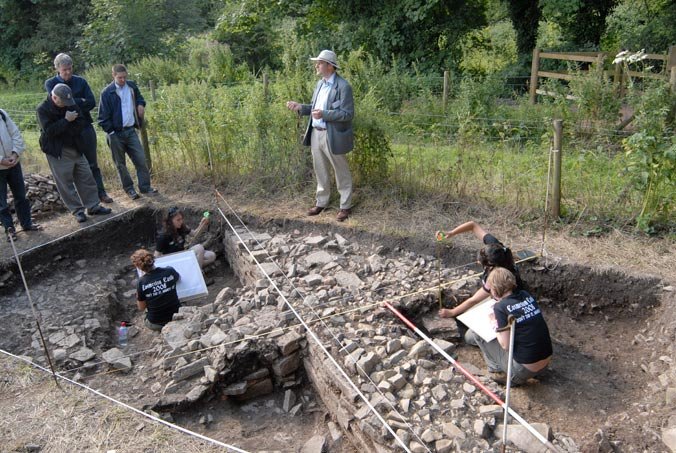Cosmeston survived the Black Death yet a century later most of its population left. Six centuries later this deserted village was uncovered. Helen Morgan from Abergavenny Local History Society reports

When Cosmeston Lakes Country Park was being carved out of the landscape near Sully, the diggers discovered the remains of a deserted village. That was 35 years ago. Since then, archaeologists have discovered enough to enable a number of village buildings to be reconstructed to look like those that stood there in the 15th century: the Reeve’s house, byre, tithe barn, bakehouse, piggery and the swineherd’s hovel are among them.

The dig at Cosmeston Lakes
At first historians assumed that life there would have been hard but, 18 months ago, fragments of an unusually elegant pottery vessel were found that have convinced them that the lord of the manor was a man of means. The aquamanile, used by guests to wash their hands at the dinner table, decorated with a ram’s head, was in a pile of rubbish near the manor hall. “It clearly shows that it did not belong to the family of a poor knight on their uppers,” says Professor John Hines of Cardiff University.

The ram’s head spout
Archaeologists have identified the pottery as Vale Ware, examples of which have been found across South Wales. Ram heads are not uncommon, but the decoration of the ram’s nose as a pouring spout is unusual plus the fact that it was made from local clay. The amount of highly decorative pottery found, including French tableware, shows that the de Costentin family, who were lords of the manor until the mid 1310s, had high status.
The site, which was used as a location in the BBC television series Merlin, is in the midst of an exceptionally rich archaeological region. It is not only close to Cardiff, site of a Roman fort and Norman castle, but also the villa and Early Medieval monastery at Llandough and the enigmatic “citadel” at Dinas Powys, says Professor Hines. “As a site of the late 11th to mid-14th centuries, it illustrates the dramatic transformation of the rural landscape under Anglo-Norman rule.”
The conventional idea that a manorial structure was imposed on a virtually blank pre-Norman landscape, and that the system collapsed after the Black Death is much too simple in this case, he says. So exactly why did most of the population abandon their village?
Professor Hines’s talk on the Cosmeston project at the Borough Theatre on February 21st starts at 7.30pm. The foyer opens at 7pm. Non-members are welcome to join on the night.

